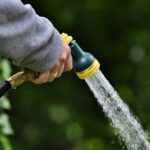Water Shortage and Ecological Consequences explained
Ecological Consequences, Water Shortage, and more
Embracing Challenges in the Great Basin: Advancing Water Security
While the Great Basin confronts water supply challenges, it also presents opportunities for innovation and resilience.
Changing Climate, Uniting Efforts:
- Climate change is reducing precipitation, necessitating proactive measures to preserve our precious water resources.
The Water Cycle Connects Us:
- Understanding the water cycle’s role in evaporating water and replenishing it through rain and snow empowers us to make informed decisions about its management.
Solutions for a Secure Future:
- Water conservation empowers us to reduce our water footprint and ensure availability for all.
- Exploring water-saving technologies, sustainable farming practices, and wastewater reuse offers innovative solutions to our water scarcity challenges.
Embracing the Impact, Inspiring Change:
- Shrinking lakes and rivers serve as reminders of the urgency to address water security.
- By embracing these impacts, we can galvanize action to protect our shared water resources for generations to come.
The Great Basin: A Thirsty Land
TL;DR: The Great Basin is facing a major water shortage due to a changing climate and overuse. This affects farms, wildlife, and our water supply. We need to find ways to use water wisely and find new ways to get water, like using less water on farms and cleaning wastewater to reuse. The Active Climate Rescue Initiative is working on this problem.
How Water Moves in the Great Basin
The Great Basin is a huge area in the western United States, covering parts of Nevada, Utah, California, Oregon, and Idaho. It’s called the “Great Basin” because it’s a big, mostly flat area surrounded by mountains, with no rivers flowing out of it. Think of it like a giant bathtub, but without a drain!
The water cycle in the Great Basin is all about how water gets from the ground to the sky and back again:
- Evaporation: The sun heats up water in lakes, rivers, and even the soil, turning it into water vapor (like steam).
- Condensation: The water vapor rises and cools, turning back into tiny water droplets that form clouds.
- Precipitation: When the droplets get too heavy, they fall back to Earth as rain or snow.
- Runoff: Water flows over the land, like rivers or streams, or seeps into the ground, becoming groundwater.
The Challenges of Water Shortage
Unfortunately, the Great Basin is facing some big challenges related to its water supply:
- Less Rain and Snow: Climate change is causing the Great Basin to get less rain and snow, which means there’s less water to fill up the lakes, rivers, and groundwater.
- Farming Needs: Farmers need a lot of water to grow crops. As the population grows, there’s more demand for food, and that means using more water for farming.
- Overuse of Groundwater: Groundwater is like a giant underground lake, but we’re using it faster than it’s being replenished. Think of it like taking money out of your bank account faster than you’re putting money in – eventually, you’ll run out.
- Water Restrictions: To save water, cities and towns are putting limits on how much water people can use, like shorter showers and less watering of lawns.
The Impact of Water Scarcity
The lack of water has serious consequences for the Great Basin:
- Shrinking Lakes and Rivers: Lakes like Lake Mead are shrinking, and rivers are running dry.
- Less Water for Farms: Farmers are facing lower crop yields because they don’t have enough water to grow their crops.
- Threats to Wildlife: Animals that depend on water, like fish and birds, are struggling to survive.
Finding Solutions to the Water Shortage
We need to find ways to use water more wisely and make sure there’s enough for everyone:
- Water Conservation: This means using less water in our homes, at school, and in businesses. For example, taking shorter showers, fixing leaky faucets, and watering lawns less.
- Innovative Irrigation: Farmers can use new ways to water crops, like using special sprinklers that don’t waste water, or planting drought-resistant crops that need less water.
- Wastewater Treatment: We can clean wastewater (the water that goes down the drain) and reuse it for watering parks and gardens.
- Policy Measures: Governments can set rules to help conserve water, like making sure people use water-efficient appliances and encouraging people to use less water outdoors.
Active Climate Rescue Initiative: A Step in the Right Direction
The Active Climate Rescue Initiative is a non-profit organization that is working to address the water shortage crisis in the Great Basin. They are focused on using innovative technology to capture rainwater and snowmelt, and using it to replenish groundwater aquifers.
Summary
The Great Basin is a beautiful and important region, but it faces a serious water shortage crisis. Climate change, overuse, and growing demand are all contributing to the problem. To solve this problem, we need to work together to conserve water, find new ways to get water, and support organizations like the Active Climate Rescue Initiative. By taking action, we can help ensure that the Great Basin has enough water for people, wildlife, and future generations.
More on Water Shortage…
- Water scarcity
- Water crisis
- Water shortage
- Water depletion
- Water stress
- Water scarcity solutions
- Water conservation
- Water efficiency
- Ecological consequences of water shortage
- Environmental impact of water scarcity
- Drought
- Climate change and water scarcity
- Water security
- Water policy
- Water management
- Sustainable water use
- Water footprint
- Water poverty
- Water rights
- Water conflict




